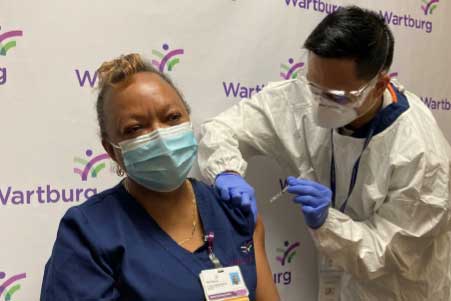Carports that have long been popular in many areas of the country as alternatives to more expensive enclosed garages may be coming in large numbers to Westchester Avenue in White Plains.
Carports have been less-than-popular in Westchester, Fairfield and other parts of the Northeast due to the need to protect vehicles and the people who use them from harsh weather conditions.
What’s being proposed, however, is a 21st-century adaptation: carports equipped with solar panels to generate electricity.
The White Plains Common Council has set a hearing for Nov. 4 on an application by Voda Solar Resources LLC to build a 282,000-square-foot solar carport facility in the RPW Group”™s office park at 1133 Westchester Ave.

Voda is asking for amended master plan and site plan approvals.
The 54.6-acre site has a 529,000-square-foot, four-story office building with at-grade parking around the building. An apartment complex is being built on 19.2 acres that were subdivided.
The proposed installation is for carport arrays: solar panels mounted on structural supports over certain at-grade parking areas. Charging stations for electric vehicles also would be provided. In addition, there would be solar panels on the office building”™s roof.
Attorney Mark Weingarten of the White Plains-based law firm DelBello Donnellan Weingarten Wise & Wiederkehr LLP explained that Voda Solar Resources LLC is a related entity of G&S Solar. G&S is a New York City-based company founded in 2009 that develops, designs, finances, constructs, operates, maintains and owns solar systems on commercial properties and is involved in community solar projects. Weingarten said that the company has about 150 solar projects to its credit so far.
“It currently is developing 71 projects in the Con Edison region, making it the leading solar developer in our region of the state,” Weingarten said. “In 2019, it was recognized as the second-largest private industrial solar developer in the United States.”
Weingarten said that the project would contribute to the federal and state goals to decrease the use of fossil fuels.
“The project alone, if approved, will supply the energy required to power 784 homes in a year,” he said. “This will be one of the largest projects in this region in the history of solar energy.”
He said that the technology of solar-powered carports permits the location of solar panels on already-developed parking lots while also providing covered parking for tenants and the ability to create charging stations for the parked cars.
Weingarten said that the application was being submitted to the city with the consent of the property owner, RPW Group.
“This is the start of something that’s going to be happening all over Westchester County and something that’s vital to all of us,” Weingarten said.
Abe Naparstek, chief operating officer of G&S Solar, said, “This is a rare opportunity where you can really get some scale and build a significant project. The total size of this project is 6.9 megawatts. This is the equivalent of 8,000 acres of forest being developed or removing 1,800 cars from the road.”
He said they have looked at the impact of the project on the neighboring properties.
“One of the nice things we have at the site is there is a significant tree barrier … that surrounds the property. There’s very little visibility from the neighboring properties to 1133,” Naparstek said.
The carports would generate 5.7 megawatts of direct current and the rooftop solar panels would generate another 1.2 megawatts. One megawatt is 1Â million watts of electricity.
The company advertises that it pays property owners to rent roofs, land or parking lots. As owners of the solar arrays, G&S Solar said that it is responsible for the installation, operation and maintenance at no cost to the property owner.
White Plains Mayor Tom Roach commented that the city has been installing solar panels at many of its buildings and recreational facilities.
“We have to remember parking lots … it’s not Yellowstone Park,” Roach said. “It’s an asphalt lot with cars in it and we have to face up to the fact that if we’re going to get serious about alternative energy, we cannot have a system where we generate all the electricity in one spot and then try to distribute it all around.
“One of the things we learned in our projects was that the electricity generated where it is going to be consumed is more valuable and makes these projects more viable.”


















